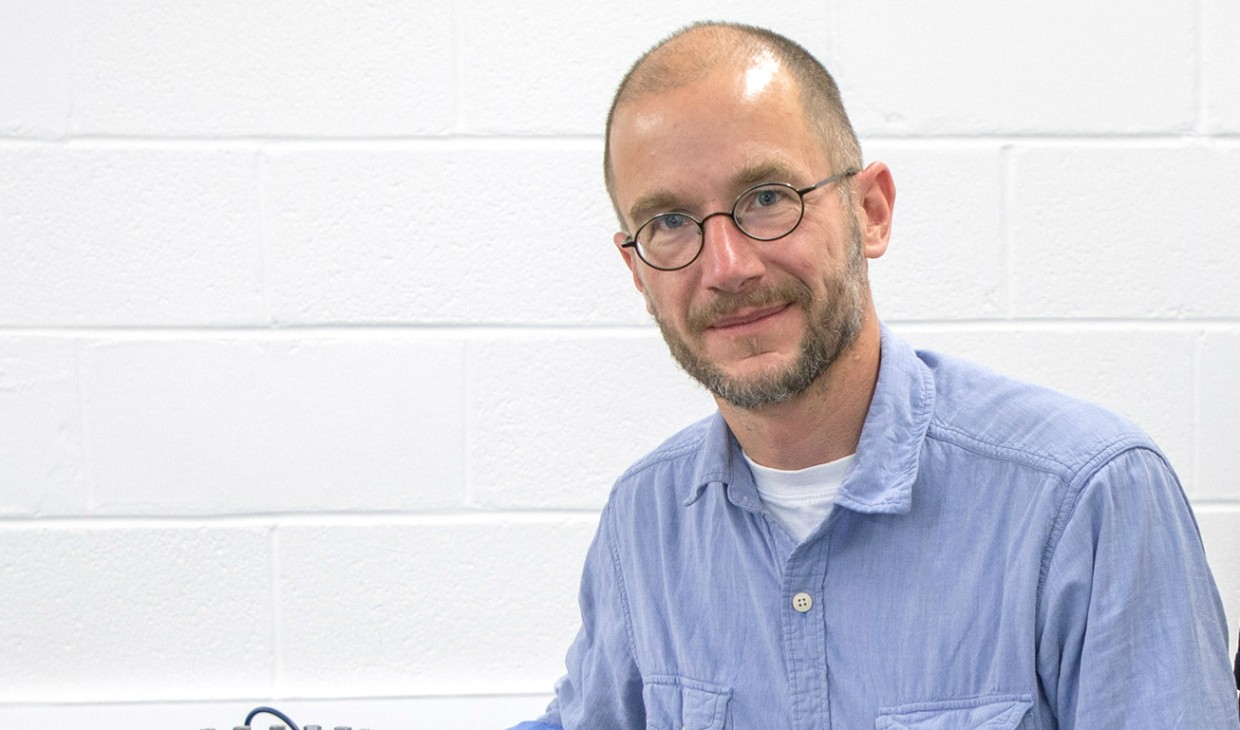Space mission explains lack of primitive meteorites found on Earth
A European lander delivered by a Japanese-led space mission – involving a University of Stirling scientist – has made an important discovery during its exploration of the primitive asteroid Ryugu.
/filters:format(webp)/filters:no_upscale()/prod01/cdn/media/stirling/news/news-centre/2019/july/space-1920X689.jpg)
A European lander delivered by a Japanese-led space mission – involving a University of Stirling scientist – has made an important discovery during its exploration of the primitive asteroid Ryugu.
The international team behind the Hayabusa2 mission found that C-type asteroids – which account for 75 percent of all asteroids – consist of more porous material than was previously thought.
The findings – published in the journal Nature Astronomy – indicate that small fragments of material from these asteroids are too fragile to survive entry into the Earth’s atmosphere and explain why meteorites of this type are rarely discovered here.
Dr Axel Hagermann, a geophysicist from Stirling’s Faculty of Natural Sciences, is the only UK-based scientist working on the mission. He said: “The link between asteroids and meteorites found on Earth is important for understanding the early evolution of the solar system – and it is also very important to understand the potential risks posed by asteroids colliding with Earth.
“Haybusa2’s lander Mobile Asteroid Surface Scout (MASCOT) – built by German and French teams – conducted the first-ever thermal close-up observations of an asteroid and found that the material on the surface was extremely frail and brittle, and that there’s an entire class of asteroid material missing from our meteorite collections here on Earth because it’s likely it never survived entry to the atmosphere.”
Matthias Grott, Principal Investigator for the MASCOT radiometer at the DLR Institute of Planetary Research in Berlin, is lead author of the study. “Ryugu surprised us,” he said. “On the asteroid, we observed only larger fragments that are highly porous and probably very fragile.
“We can now confirm that fragments of these asteroids are very likely to break up further when they enter Earth’s atmosphere, and then usually burn up completely. This means that only the largest fragments reach the Earth’s surface.
“That is why meteorites from this type of asteroid are so rarely found on Earth.”

Dr Axel Hagermann is the only UK-based scientist working on the Hayabusa2 mission.
Discovered in May 1999, Ryugu is a primitive, C-type asteroid – meaning its composition includes water and organics – and is part of the Apollo group of asteroids, regarded as potentially hazardous due to their close proximity to Earth.
Hayabusa2 is the first mission to an asteroid of this nature and only the second ever to return a sample from an asteroid, and experts believe it will provide an important insight into conditions in the early solar system.
The successor of Hayabusa, which returned to earth in 2010, the latest mission is flown by the Japan Aerospace Exploration Agency in collaboration with the German Aerospace Centre and the National Centre for Space Studies in France. Launched in December 2014, the 600kg spacecraft features ion engines as well as state-of-the-art guidance and navigation technology, antennas and attitude control systems.
It entered into orbit around Ryugu on June 27 last year and dispatched its lander on October 3.
Dr Hagermann is co-investigator on the Thermal Infrared Imager, which studies the temperature and thermal inertia of the asteroid. He is also supporting analysis of data from a radiometer on the German-built lander, using this information to recreate the exact conditions of the asteroid surface in the Planetary Ices Laboratory at Stirling.
In addition to the radiometer, MASCOT also carries an infrared spectrometer, a magnetometer and a camera, as well as an explosive device, to create an artificial crater to aid sampling.
Hayabusa2 is expected to return to Earth with samples by 2021, allowing the team to clarify interactions between minerals, water and organic matter in the primitive solar system.
Stirling’s involvement in Hayabusa2 is funded by the Science and Technology Facilities Council.
